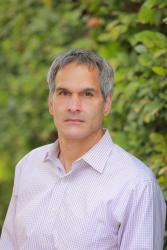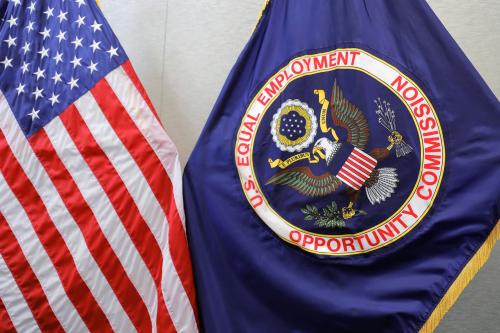How can countries support innovative approaches to facilitating access to and usage of formal financial services among low-income and other marginalized groups while mitigating the risk of misuse within the financial sector?
As part of the Brookings Financial and Digital Inclusion Project (FDIP), the FDIP team recently hosted a roundtable to examine this central question. The objective of the roundtable was to identify and discuss salient challenges and opportunities for financial services providers, government entities, and consumers with respect to balancing anti-money laundering/combating the financing of terrorism (AML/CFT) compliance — a critical component of financial integrity and stability — with inclusive financial access and growth.
We explore several key questions and themes that emerged from the roundtable below.
Do areas of synergy exist between financial inclusion and AML/CFT efforts?
- AML/CFT requirements and financial inclusion have sometimes been perceived as being in tension with one another — for example, stringent “know your customer” (KYC) requirements associated with AML processes can restrict formal financial access among marginalized groups who are unable to fulfill the KYC documentation requirements. However, the objectives of AML/CFT (ensuring stability and integrity within the financial sector) and financial inclusion (providing access to and promoting usage of a broad range of appropriate, affordable financial services) can be mutually reinforcing.
- By moving individuals from the shadow economy into the formal financial system, greater opportunities emerge for introducing underserved populations to a broad suite of formal financial services, and ensuring those services are accompanied by suitable consumer protections. Thus, financial inclusion, financial integrity, and financial stability can act as complementary objectives.
- The 2012 Declaration of the Ministers and Representatives of the Financial Action Task Force (FATF) recognized financial exclusion as a money laundering and terrorist financing risk in approving FATF’s 2012-2020 Mandate. This mandate affirmed FATF’s 2011 guidance on AML and terrorist financing measures and financial inclusion, which stated that “[i]t is acknowledged at the same time that financial exclusion works against effective AML/CFT policies. Indeed the prevalence of a large informal, unregulated and undocumented economy negatively affects AML/CFT efforts and the integrity of the financial system. Informal, unregulated and undocumented financial services and a pervasive cash economy can generate significant money laundering and terrorist financing risks and negatively affect AML/CFT preventive, detection and investigation/prosecution efforts.”
What are key challenges and concerns with respect to balancing financial inclusion with financial integrity?
- Awareness of financial inclusion issues is not universal among individuals who work in the regulatory, compliance, and law enforcement spheres of the financial ecosystem. Engagement among these groups is critical for promoting knowledge-sharing with respect to financial integrity and inclusion.
- Although FATF and other standard-setting bodies (SSBs) have increasingly adopted recommendations favoring proportionate, risk-based approaches to AML/CFT (as evidenced by the 2013 FATF Guidance on Financial Inclusion), regulators often pursue more conservative approaches than SSB guidelines recommend. These conservative approaches may constrain access to and usage of formal financial services among marginalized groups.
- Combating the potential use of low-value transfers within countries and across borders for terrorist financing purposes is a salient concern for the law enforcement community when considering proportionate AML/CFT approaches.
How does the digital component fit into these issues?
- As its name suggests, FDIP is interested in exploring the evolving role of digital technology within the financial services ecosystem. As discussed in the 2015 FDIP Report, digitization of financial services can be more cost-effective for public and private sector providers to manage and safer for consumers than carrying or storing cash.
- For example, a 2013 report found that the Mexican government saved about $1.3 billion annually by centralizing and digitizing payments for wages, pensions, and social transfers. A 2014 report by the World Bank Development Research Group, the Better Than Cash Alliance, and the Bill & Melinda Gates Foundation highlighted several countries, including South Africa, where disbursing social transfers electronically cost significantly less than manual cash disbursement.
- Digital financial services can also promote women’s economic empowerment, as these services are often more private and convenient to access than traveling to a “brick and mortar” financial service provider. Given that as of 2014 there was a 9 percentage point gap between the number of men and women with accounts in developing economies (with women disproportionately excluded from account ownership), facilitating access to formal financial services among the 42 percent of women globally who do not have an account will be a major factor in advancing financial inclusion.
- With respect to financial integrity in particular, digital identification mechanisms such as biometric IDs can help lower access barriers to financial services while ensuring that providers have the information they need to promote security and stability in the financial ecosystem. In its June 2011 guidance, FATF recognized the use of non-documentary methods of identification verification — for example, a signed declaration from a community leader coupled with a photo taken by a mobile phone — for advancing access to formal financial services among underserved groups.
- The Aadhaar initiative in India, which the FDIP team referenced in a previous post, is currently the largest biometric identification program in the world. The unique 12-digit ID enables individuals to meet KYC requirements and has been used as a financial account among those who do not have an account with a financial institution. Another innovative digital initiative is underway in Tanzania, where the government is working in concert with mobile carrier Tigo and UNICEF to provide birth certificates via mobile phones.
What are critical questions and areas of opportunity for fostering financial inclusion and integrity moving forward?
- How can regulators and providers ensure sufficient privacy protections are in place for customers when advancing financial inclusion efforts, particularly through digital channels?
- Through what mechanisms can government entities and non-government financial services providers best mitigate the risks of centralizing sensitive customer data?
- Could an industry utility that facilitates a common solution to AML systems serve as a feasible solution for harmonizing standards?
- What is the proper role of private solutions in the AML/CFT and financial inclusion spaces?
- Could identification verification applications be developed using blockchain technology?
- In what ways can social networks be leveraged with respect to digital identity initiatives and financial inclusion?
The Brookings Institution is committed to quality, independence, and impact.
We are supported by a diverse array of funders. In line with our values and policies, each Brookings publication represents the sole views of its author(s).












Commentary
Fostering financial inclusion and financial integrity: Brookings roundtable readout
November 12, 2015